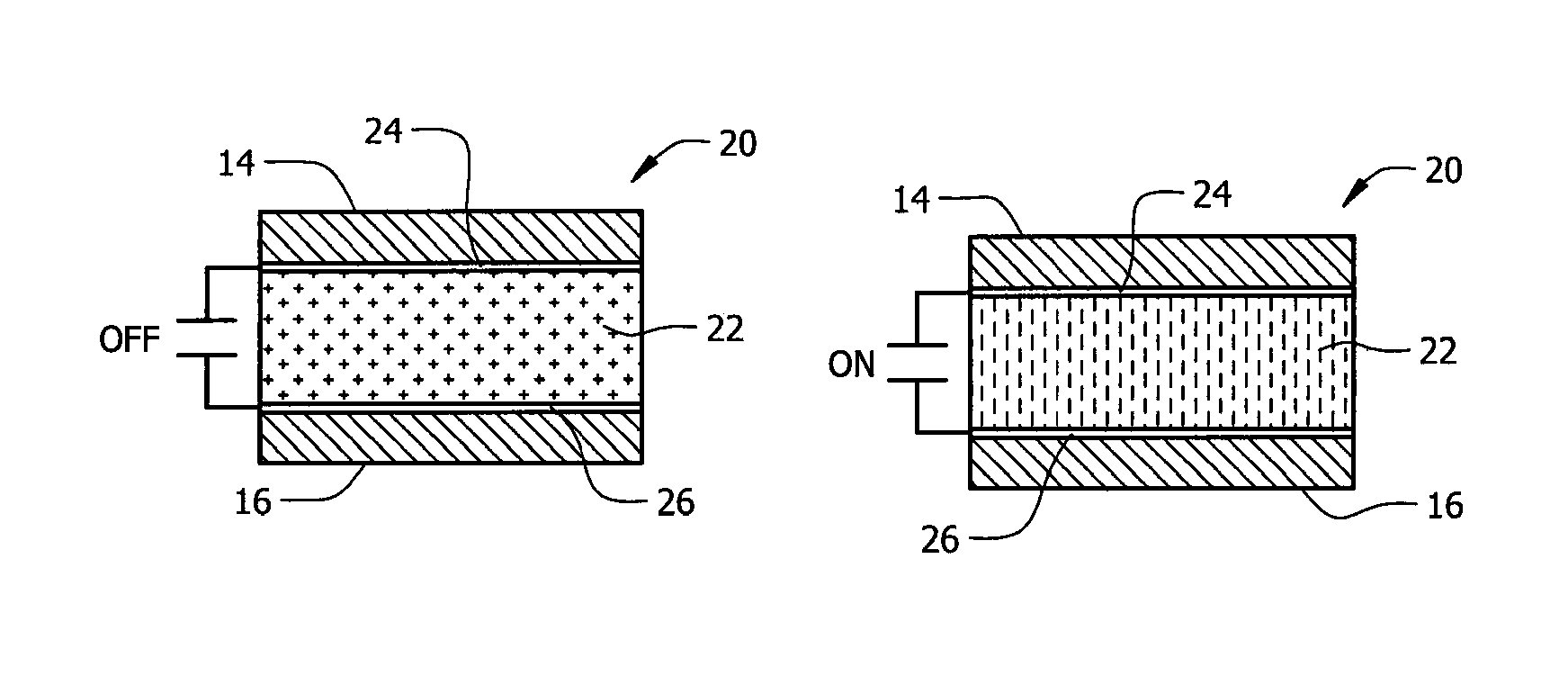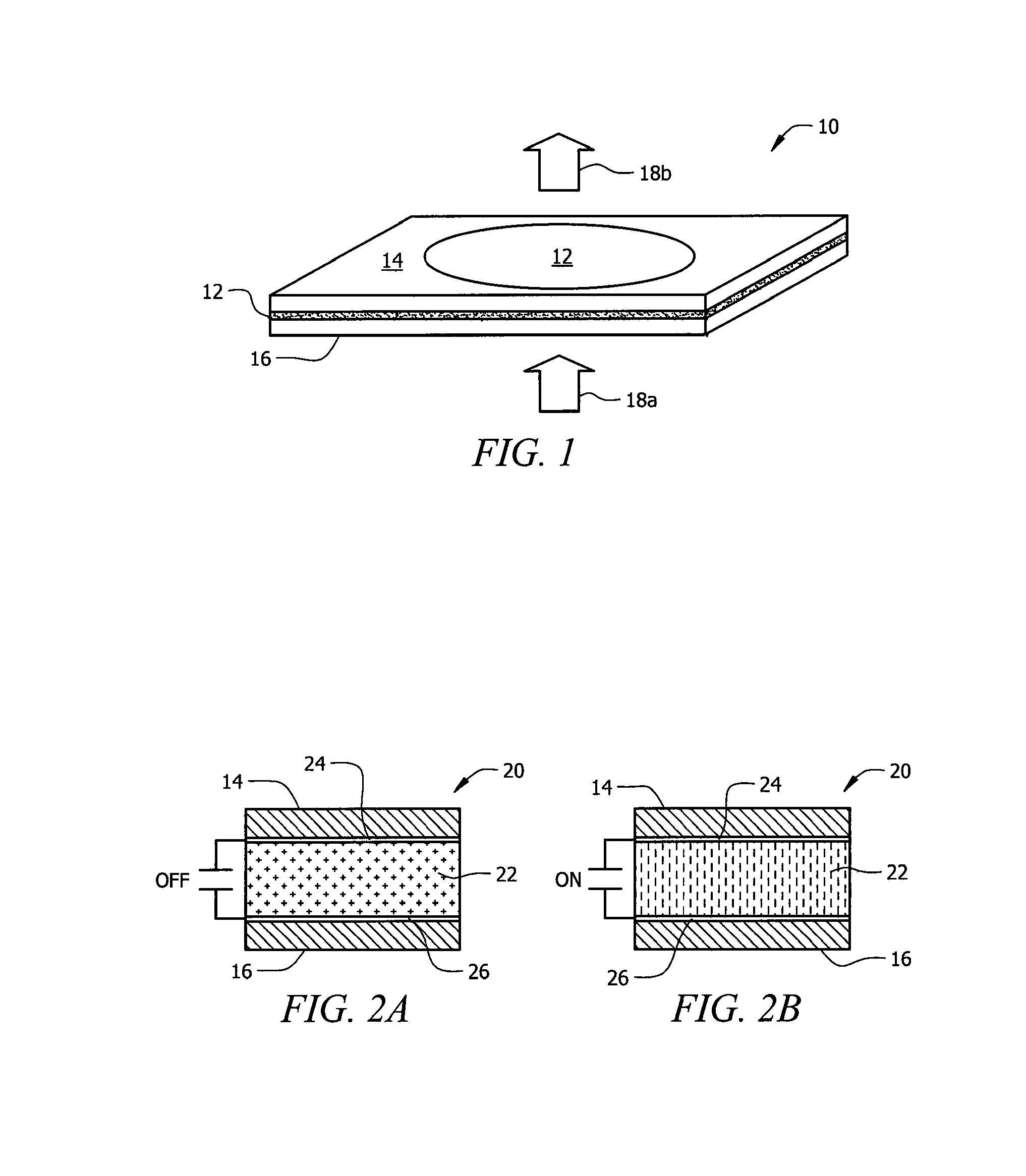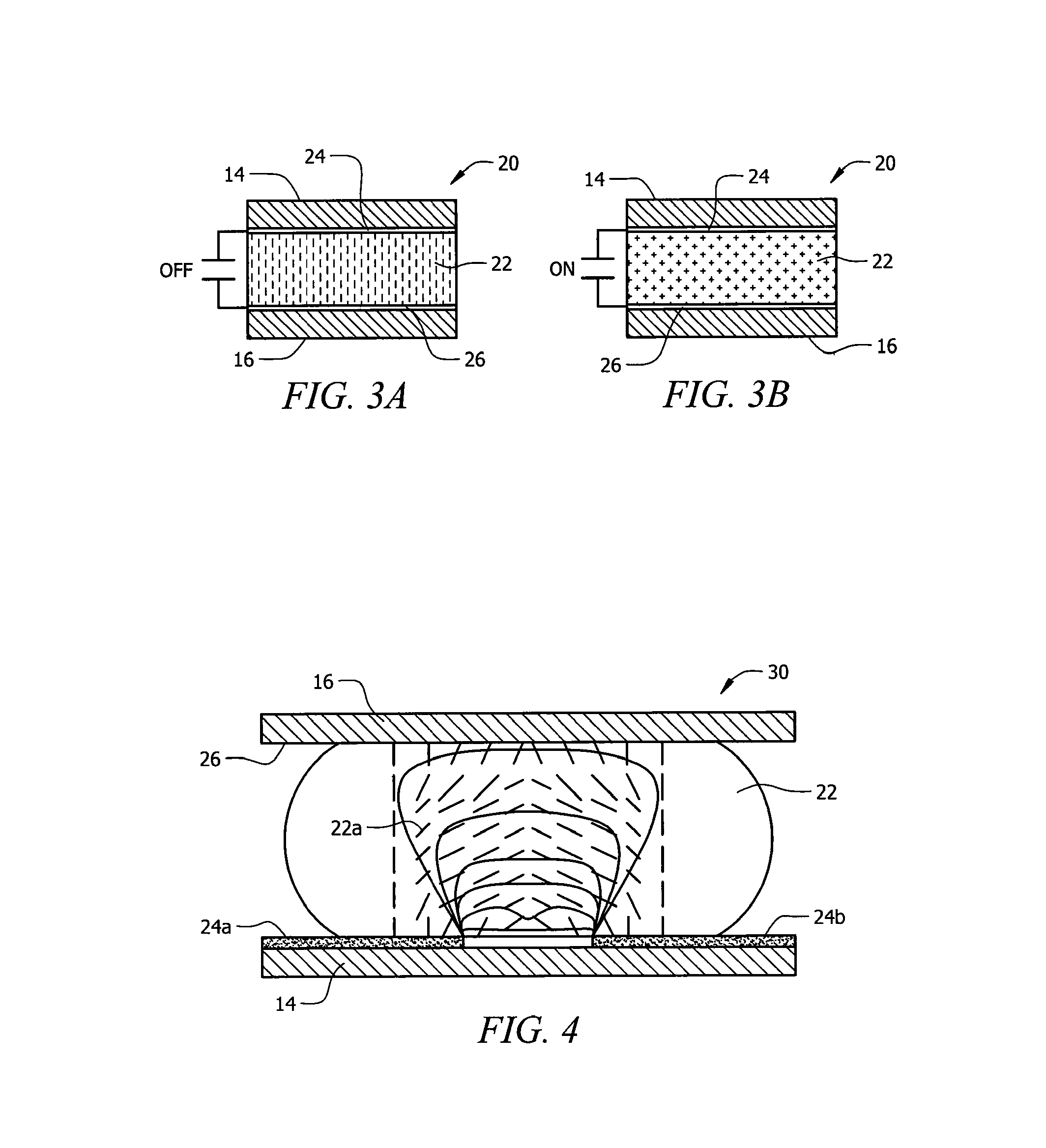Method for despeckling in laser display systems
a laser display and laser technology, applied in non-linear optics, instruments, optics, etc., can solve problems such as random phase retardation, and achieve the effects of low operating voltage, high transparence, and high efficiency
- Summary
- Abstract
- Description
- Claims
- Application Information
AI Technical Summary
Benefits of technology
Problems solved by technology
Method used
Image
Examples
Embodiment Construction
[0049]The text accompanied by FIGS. 1-4 relates to the subject of phase modulation across the beam.
[0050]Referring now to FIG. 1, it will there be seen that an illustrative embodiment of the invention is denoted as a whole by the reference numeral 10.
[0051]Apparatus 10 removes speckles by randomly varying the phase or waveform across a laser beam. A single liquid crystal cell 12 is positioned between two (2) glass substrates 14, 16, both of which have flat surfaces. The liquid crystal molecules of liquid crystal cell 12 are either randomly or vertically oriented. Cell 12 is larger in size than input laser beam 18a and therefore no pixel structures are required to eliminate or substantially inhibit diffraction or scatter loss of laser light. The output laser beam is denoted 18b. There are no alignment layers; accordingly, the need for a polyimide rubbing process is also eliminated. The input and ground electrodes that sandwich the liquid crystal layer in FIG. 1 are not depicted to si...
PUM
| Property | Measurement | Unit |
|---|---|---|
| angle | aaaaa | aaaaa |
| angle | aaaaa | aaaaa |
| angle | aaaaa | aaaaa |
Abstract
Description
Claims
Application Information
 Login to View More
Login to View More - R&D
- Intellectual Property
- Life Sciences
- Materials
- Tech Scout
- Unparalleled Data Quality
- Higher Quality Content
- 60% Fewer Hallucinations
Browse by: Latest US Patents, China's latest patents, Technical Efficacy Thesaurus, Application Domain, Technology Topic, Popular Technical Reports.
© 2025 PatSnap. All rights reserved.Legal|Privacy policy|Modern Slavery Act Transparency Statement|Sitemap|About US| Contact US: help@patsnap.com



